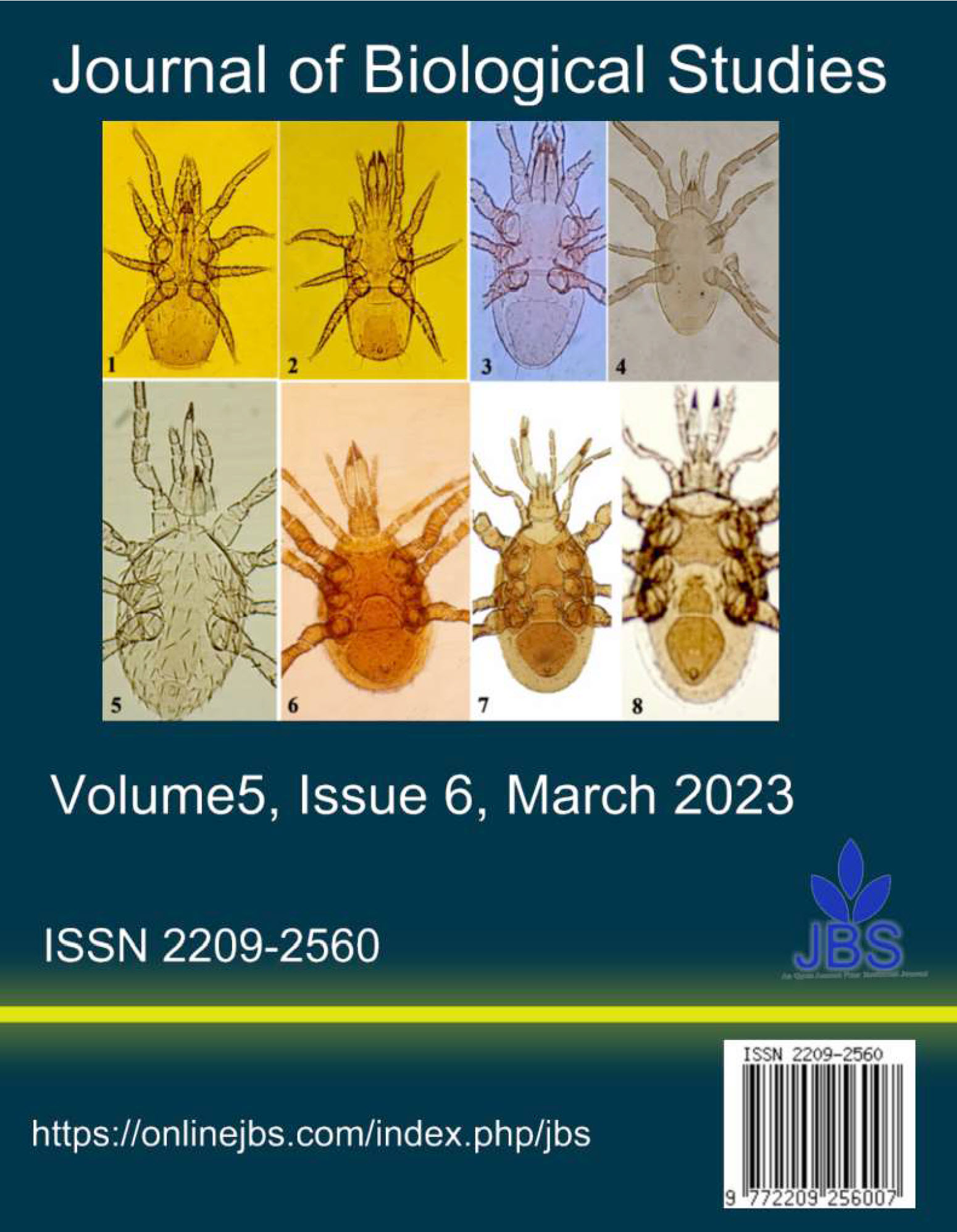Acute toxicity and histopathological effects of Malathion on shrimp Macrobrachium nipponense (De Haan, 1849) (Caridea: Palaemonidae)
Main Article Content
Abstract
In the south of Iraq, Malathion is frequently used in agricultural activities and over-
fishing, significantly harming the environment and animals that live in the region's waterways.
The 96-h LC50 toxicity of malathion was determined in Macrobrachium nipponense and the value
was 61.27 µg/L. Based on the 96-h LC50 value, two concentrations (1:10 and 1:5 of the 96-h LC50)
were selected as sublethal concentrations for 1 week exposure for histopathology analysis. The
most histopathological alterations in hepatopancreas were abnormal lumen ALU after 1 week of
exposure to Malathion with the sublethal concentration 6.12 µg/L. In the other sublethal concen-
tration of Malathion 12.25 µg/L for 1 week exposure, abnormal lumen ALU; necrosis of epithelial
cells NC; and necrosis of tubules were recorded.
Article Details

This work is licensed under a Creative Commons Attribution 4.0 International License.
